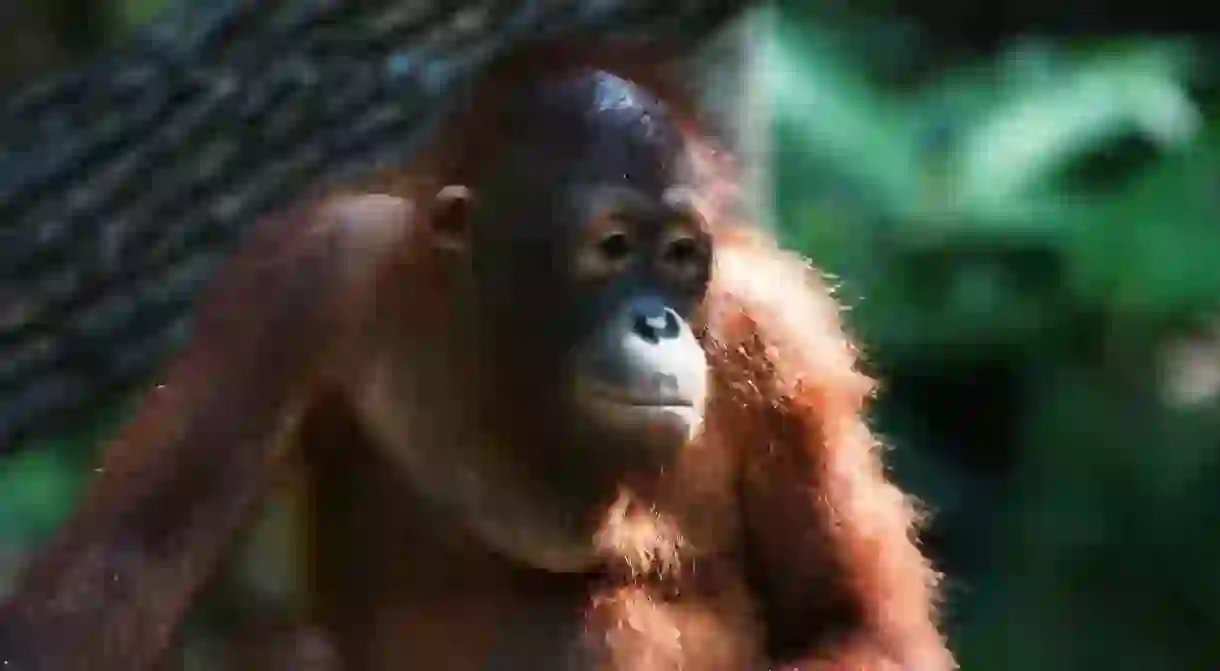Where to See Orangutans in Malaysian Borneo

Sadly, there are only two places in the world to see orangutans in their natural habitat: Borneo and Sumatra. In Borneo, you’ll find rehabilitation centres that adopt the orphaned and young so they can return to the jungle. Here’s where to see orangutans while in Southeast Asia.
Danum Valley Conservation Area, Sabah
Forest, Hiking Trail

For the chance to see wild orangutans in the Malaysian jungle, head to Danum Valley. This vast forest became a protected area before the era of mass deforestation, which has led to widespread habitat destruction elsewhere. As such, the reserve has changed little in millennia. Located approximately two hours’ drive from Lahad Datu in eastern Sabah, the reserve centre is full of guides who can take you into the rainforest to spot wild orangutans. Stay at least a night or two in the on-site hostel or bungalows.
Kinabatangan River, Sabah
Forest

The Kinabatangan River area features varied habitats, housing a range of wildlife. The river itself is full of saltwater crocodiles – the ones that wouldn’t think twice about eating humans – as well as a relatively large population of wild proboscis monkeys. River cruises, both during daylight hours and at night, take visitors on wildlife safaris. Lucky passengers might catch a glimpse of an orangutan among the mangroves.
Sepilok Orangutan Rehabilitation Centre, Sabah
Forest

Sepilok Rehabilitation Centre, approximately 26km (16mi) west of Sandakan, is the number one place to see orangutans in Malaysia. The reserve was opened in 1964 by conservationist Barbara Harrisson, and became the world’s first centre dedicated to orphaned orangutans. Today, it houses between 60 and 80, of which approximately 25 are infants living in the nursery. Feeding takes place at 10am and 3pm every day. You can watch the primates come out of the reserve and swing to the platform to grab fruit.
Lok Kawi Wildlife Park, Sabah
Zoo

Several species of endemic wildlife, including proboscis monkeys, pygmy elephants and orangutans, are inside Lok Kawi. While the primates aren’t in their natural habitat, the wildlife park is within a 30-minute drive of Sabah’s capital Kota Kinabalu. If you have limited time in Malaysian Borneo, you’ll be able to see orangutans without travelling deep into the jungle.
Semenggoh Nature Reserve, Sarawak
Forest

Semenggoh has been an active rehabilitation centre since 1975. Young or orphaned primates brought to the centre are taken care of until they learn jungle survival skills. For those in Kuching, Semenggoh is just 28km (17mi) south of the Sarawak capital. Primates inside the nature reserve roam around freely, so catching a glimpse isn’t a guarantee. But visit during feeding – between 9am and 10am and again from 3pm to 4pm – and you’ll likely see them.
Kubah National Park, Sarawak
Forest
Sarawak’s Kubah National Park sits just 21km (13mi) west of Kuching. On its western side is the Matang Wildlife Centre, which houses a variety of animals, including orphaned orangutans. The centre adopts rescued primates and teaches survival skills in the same way as a rehabilitation centre. Visitors can stay overnight in the national park and experience the jungle after dark, or spend time hiking along trails to waterfalls.













